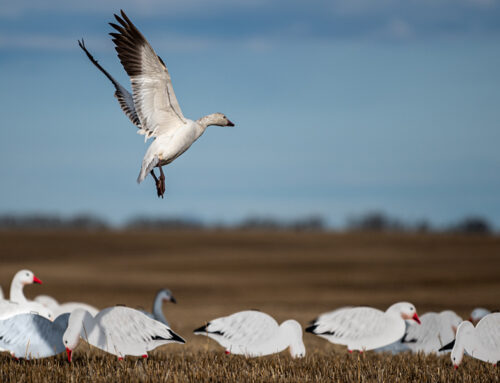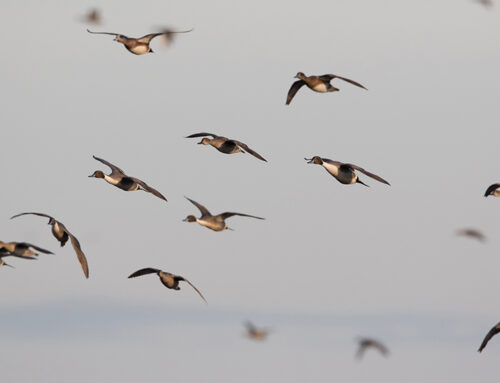Gunning for Gadwalls

By Kyle Wintersteen, Managing Editor
In three decades, gadwalls have gone from rare trophies to duck-strap staples across much of North America. Their populations have more than doubled since the 1980s — peaking at 4.18 million 2017 — and they typically rank as the third most harvested species behind mallards and green-winged teal. They’re an especially important species in the southern United States, where they concentrate in winter, but they provide action in all flyways just ahead of the peak mallard migration.
However, while distant gadwalls might look like smaller, gently hued mallards, that doesn’t mean they should be treated as such. These specialized tactics will help you capitalize on their abundance this season.
Create a Sanctuary
Mallards are an aggressive species, consuming large portions of available food resources. Gadwalls are comparatively of the Type B personality — laid back and preferring security to bold antics. That’s why a relaxed, refuge-like spread of loafing floating decoys often lures gadwalls in the same manner that an active, motion-friendly rig attracts greenheads.
Target Water
The ideal gadwall spread is arranged in three types of habitats: small water such as ponds or marshes, big water such as lake edges or rivers, or flooded timber. They’re rarely found in grain fields. As a rule, spreads of three- to five-dozen blocks are best over big water, particularly in the late season when large numbers arrive. In the early season, a mere dozen blocks can be effective along wooded creeks.
Float Coot and Wigeon Dekes
There’s something about coots — which are of the rail family and closer relatives of sandhill cranes than ducks — that lends confidence to gadwalls. You might feel silly the first time you add a dozen to your spread, that is, until the gadwalls cup to them. Wigeon, likewise, tend to mix with gadwalls, perhaps sharing a common interest in stealing food from ducks that rightly earned it.
This season, try placing a dark, attention-grabbing raft of coots downwind, and round out the spread with a half-dozen gadwalls, a half-dozen wigeon and perhaps a dozen Canada goose floating sleeper decoys for even more visibility. Separate the coots, but mix the ducks and geese together according to the wind. Your enticing gadwall refuge is ready.
Don’t Speak Mallard
When provided a convincing argument via your duck call, mallards are fairly prone to pitching to unplanned destinations. Gadwalls are decidedly pickier, less inclined to stray from the mission at hand. (Note this also speaks to the importance of scouting for gadwall strongholds.) This leads some ’fowlers to pocket their calls, but gadwalls do respond well when elicited properly.
Plenty of experts propose that effective gadwall greeting and comeback calls require a faster sequence. Others prefer a gentler, minimalist approach. Instead, split the difference: Greet gadwalls just as you would mallards, but then tone it down as they begin to commit. When gadwalls swing wide to the corners of the spread, call just as aggressively as you would greenheads — get their attention and hold it. When it’s time for quacks and finishing chatter, go a little softer than for approaching mallards. Mimic the hen gadwall’s mellow, abbreviated, less-raspy quack to seal the deal. There are a variety of dedicated gadwall calls on the market, but a single-reed mallard call is perfectly suitable for the smooth, higher-pitched notes.
Call the Shot
You can second-guess yourself all the time when mallard hunting — should you have given them another pass or called the shot sooner? With gadwalls, the timing is simple: If you get a shot, take it. If mallards are unpredictable, then gadwalls are downright irrational, as it seems sometimes even they don’t know their next move. There are days when they pour in from the heavens in full committal, and others when they merely tease you with a couple passes. Given these uncivilized antics, err on the side of shooting as soon as they enter gun range.




I’ve only ever bagged 2 gadwalls here in Newfoundland, Canada. Pretty rare birds to see here